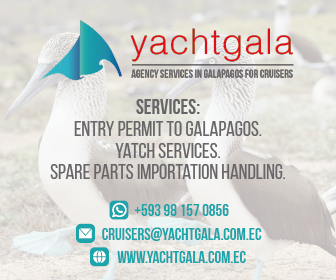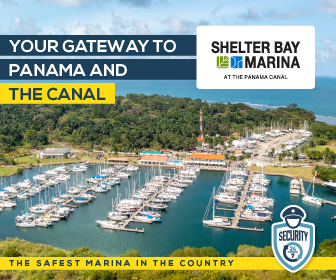Visiting the Galapagos? Reduce your Human Footprint
Published 13 years ago, updated 6 years ago
We are working very hard on the Galapagos Islands to reduce the human footprint on this unique environment. Below is some information about the correct waste disposal procedures for visiting cruising yachts. This covers all ports in the Galapagos.
Maximilian Martin
WWF Galapagos Waste and Energy Program
Background Information
The Galapagos Islands have unique ecosystems and it is important to leave the islands as clean as they were before your visit. Dumping waste harms both flora and fauna, (e.g. animals mix up little plastic particles with their natural food and die; dumped batteries pass on their toxic substances into the water cycle). The municipalities in the Galapagos are working to reduce the waste dumped on their landfills by applying waste separation at source and recycling the most common products such as plastics, glass, cardboard etc. In that process, both the local population as well as the tourism sector are involved and play an important role.
It is, therefore, necessary to collect and separate your waste properly on your voyage to the Galapagos as well as during your stay and travel within the islands.
Recycling System
On all inhabited islands the recycling system consists of three different categories. To each waste category, a different color is assigned in order to identify the respective bins/containers.
BLUE – RECYCLABLE WASTE
(All parts should be clean and dry)
– Plastic and Glass Bottles/packs
– Tetra Pak
– Paper and Cardboard
– Metals such as bins
– Batteries (put into plastic bottles)
– Cables
GREEN – ORGANIC WASTE
– Food such as fruits, vegetables, meat and fish
BLACK – NON RECYCLABLE WASTE
– Toilet paper
– Dirty paper
– Clothes
– Disposable dishes (Plates, Plastic Silverware, …)
Process
Please separate your waste onboard according to our categories to ensure that future generations have the same chance to visit these unique places. All uncategorized waste, or waste that is put in the black waste bins, will remain on the island and contaminate the Galapagos Islands. Please try and take this away with you.
On the different harbors waste handling is slightly different:
Isabela Island – Puerto Villamil
The generated and classified waste has to be transported by particular vehicles (taxis) to the recycling center of the municipality of Isabela which is located in the street “Via de Los Talleres”. There is no public service to collect the waste from visiting sailing boats, therefore please take it there yourself. The recycling center is open Monday to Friday from 07h00 – 12h00 and 13h00 – 16h00.
Further information about the waste management at this port can be obtained from the Environmental Department of the municipality of Isabela. Address: Av. 16 de Marzo y Av. Antonio Gil. Telephone: 05 2529 002, ext. 110.
San Cristóbal Island – Puerto Baquerizo Moreno
As with Isabela, if you have classified waste to dispose of here, please take a taxi to the recycling center, open Monday to Sunday from 07h00 – 12h00 and 14h00 – 17h00.
Costs: For the waste generation and processing 20% of the fee charged in the Marina (DIRNEA) has to be paid at the financial department of the municipality of San Cristobal. Further information about the waste management at this port can be obtained from the Environmental Department of the municipality of Cristobal.
St. Cruz Island – Puerto Ayora
In Puerto Ayora, there is a private service operator that collects categorized waste from boats in the harbor. Mister Omar Romero, nickname Don Yore, charges for the transportation of waste depending on the volume. He can be reached via telephone: 00593 99 24 80 77.
Further information about the waste management at this port can be obtained from the Environmental Department of the municipality of Santa Cruz. Address: Av. Charles Darwin y 12 de Febrero. Telephone: 05 2526 153, ext. 15.
Thank you for helping to protect the Galapagos for future generations.
Related to the following Cruising Resources: Environment









